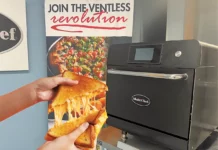
Properly managing leave of absence requests requires an understanding of eligibility, duration and state laws.
Without the proper training and understanding, managers may find themselves in difficult situations with employees and vendors that involve such sensitive topics as race, gender and religion, resulting in an increase in the number of lawsuits filed against employers alleging discrimination, harassment and retaliation.
These claims are among the most costly and time-consuming an employer and law practice may face.
Today, it’s imperative to have a Workplace Absence Management (WAM) handbook and ensure that all managers understand the basics of leave administration. The best leave of absence practices balance employee benefits while maintaining legal obligations.
By implementing a WAM program, employers can reduce chronic absenteeism and streamline the process for employees who are experiencing out-of-the-ordinary circumstances to take time off.
Common reasons for leaves include childbirth, adoption/foster care, military obligation, caring for an ill family member and serious health conditions. In addition to local, state and federal laws, employers can supplement their legal obligations with voluntary leave policies as a recruitment and engagement tool.
Absences planned or unplanned are going to occur. Even the best employee will miss work at some point.
Companies can’t prevent this, but they can prepare to ensure that they have the right processes in place when they do.
Below, we will outline the top three most common FMLA eligible reasons for leave in hospitality: maternity leave, workers’ compensation (WC) and non-occupational illness/injury and their considerations for the employer:
Table of Contents
1) Maternity Leave
Let’s say an employee tells her manager that she is pregnant and will need maternity leave. The manager must know that:
– Under the Federal Pregnancy Discrimination Act (PDA), employers cannot treat pregnant employees any different than other employees.
– The Pregnant Workers Fairness Act requires employers to provide accommodations to employees who are pregnant with similar protection as offered under ADA.
– The law is part of Title VII and is overseen by the Equal Employment Opportunity Commission (EEOC).
– All states also have laws that ban discrimination of pregnant employees.
– Many states also have laws regarding post-pregnancy concerns, such as lactation support.
In this scenario, the employer determines leave eligibility under the Family Medical Leave Act (FMLA) and/or any similar state leave laws. The employee also may be eligible for income benefits from the company-sponsored Paid Parental Leave (PPL) benefit.
The employee also should be advised how to contact the company’s Short-Term Disability (STD) provider. Once payment commences, the plan pays up to 60% of the employee’s weekly salary to a maximum benefit. This will be discussed with the employee by the STD carrier.
Managers should not attempt to calculate the employee’s benefits for her. The amount of time an employee will be on maternity leave depends on the state in which she is located and the type of delivery.
2) Non-Occupational Illness/Injury
Employees can be eligible for leave and disability benefits for non-occupational injuries or illnesses. These are injuries/illnesses that occur away from work and during non-working hours.
Employees who are injured or become ill as a result of their job during working hours may be eligible for workers’ compensation (WC), but the following will focus on non-occupational conditions.
Let’s consider that an employee advises his manager that he is having surgery and will be unable to work for eight weeks. In this scenario, the company checks his eligibility and determines he is eligible for leave under FMLA and for Short-Term Disability (STD) benefits.
The disability plan has a 14-day (two week) elimination period (EP). Once payment commences, the plan pays up to 60% of the employee’s weekly salary to a maximum benefit.
This will be discussed with the employee by the STD carrier. The manager should not attempt to calculate the employee’s benefits for him.
3) Workers’ Compensation
A manager returns from a 2-week vacation and receives notice that one of his employees has been injured at work. Employees who are injured or become ill during their working hours may be eligible for WC.
This type of leave could be simultaneous with FMLA if the eligibility requirements are met.
In this case, the manager must:
– Ensure the employee has appropriate care whether medical attention is needed or not.
– Contact the company’s Human Resources Department immediately.
– Follow any protocol for documenting workers’ compensation
incidents.
– Know that reporting the incident enables the employee to qualify for coverage as soon as possible. Late reporting may result in the employee’s delay or denial of benefits.
In this scenario, the company will determine if the employee is eligible for leave under Family Medical Leave Act (FMLA) and/or any similar state leave laws.
The manager should not attempt to advise the employee on eligibility. Human resources will provide information about the benefits the employee may be eligible to receive while on WC leave.
There are also specific scenarios where these reasons for leave would not be eligible for FMLA so each scenario must be handled individually. Workforce leave and absence policies help not only to shape your business culture but are integral to operational efficiency. HUB can help you gain the insights you need to align all aspects of your benefits program.
To discuss how your programs stack up against this study’s benchmarks or how effectively they support your overall benefits strategy, contact your insurance advisor for WAM consulting.























